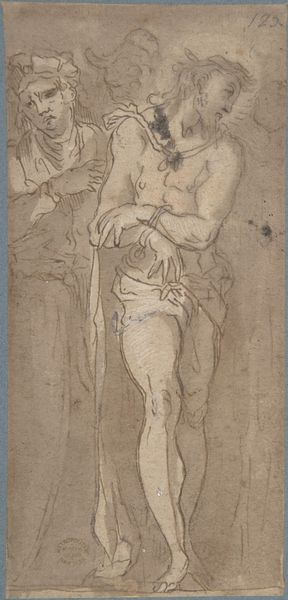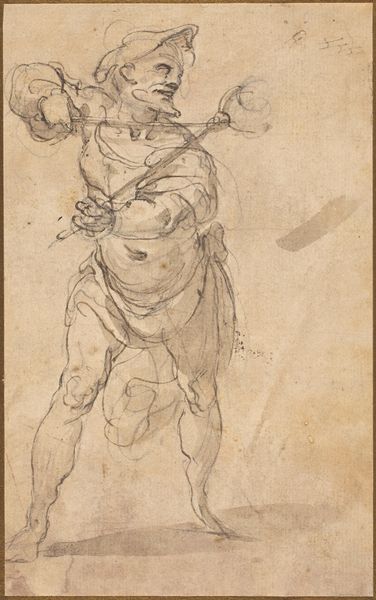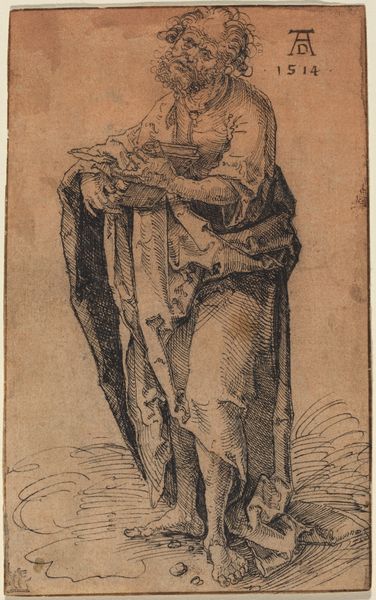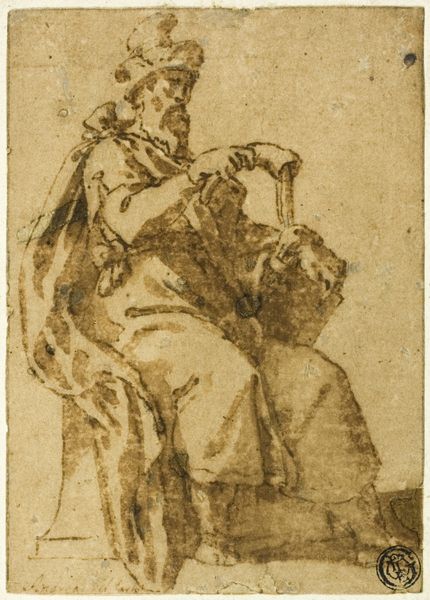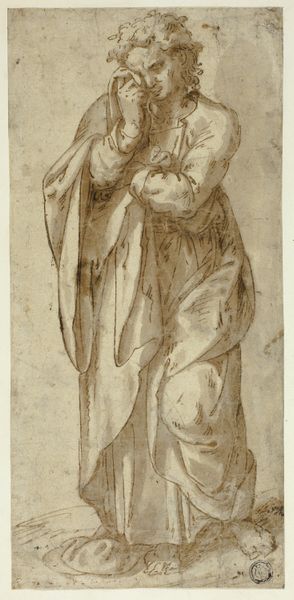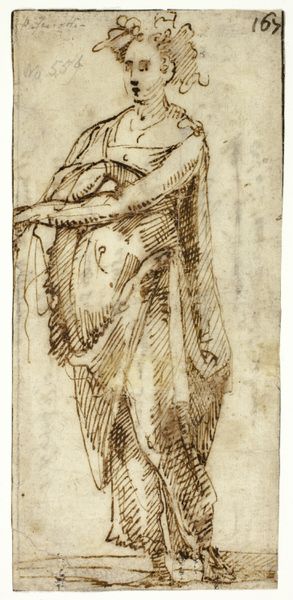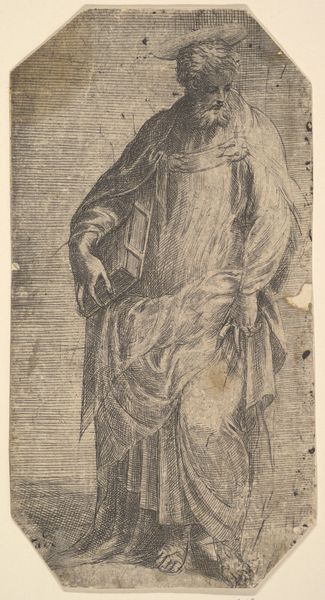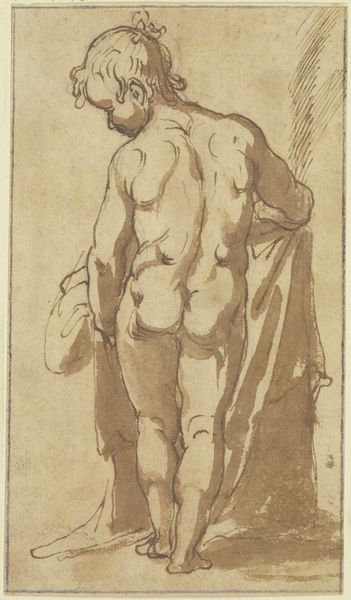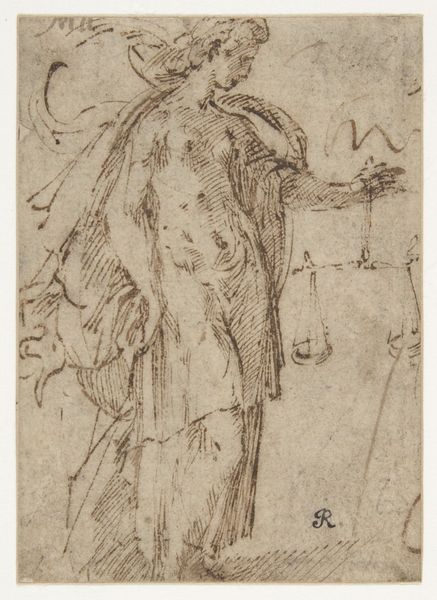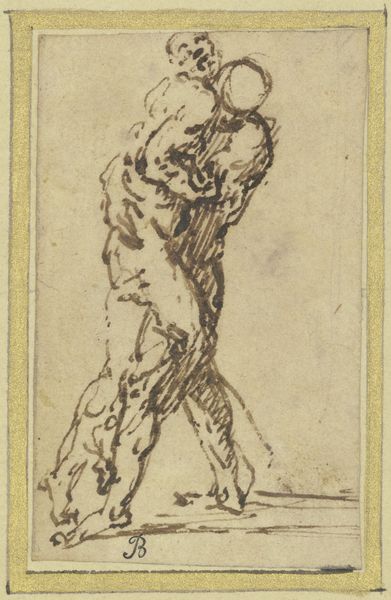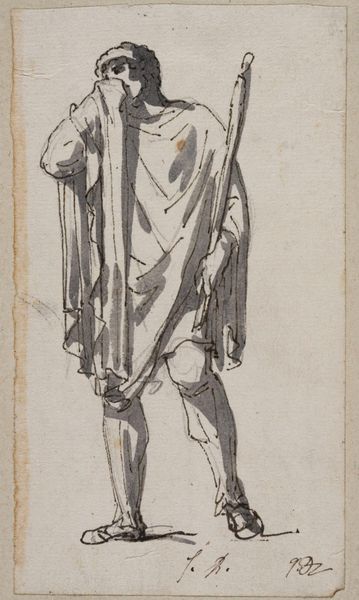
drawing, ink, chalk
#
drawing
#
figuration
#
11_renaissance
#
ink
#
coloured pencil
#
chalk
#
italian-renaissance
#
nude
Copyright: Public Domain
Curator: Standing before us is Luca Cambiaso’s "Stehender Knabenakt mit umgehängtem Tuch", a drawing rendered around 1590, presently housed in the Städel Museum. Cambiaso employed ink and chalk on paper for this sketch. Editor: My immediate impression is one of arrested motion, the muted browns imbuing the figure with a sense of stillness, perhaps even melancholy. What strikes you most? Curator: Its pedagogical function is significant. Cambiaso, a pivotal figure of the Italian Renaissance, often created such studies as a demonstration for his pupils, illustrating ideal proportions and exploring the modulation of light across the human form. Editor: Right. Notice how the contour lines seem almost provisional, as if testing the boundaries of form itself. There's a captivating tension between definition and ambiguity, most noticeable where shadow melts into light. I wonder about the effect on its audience at that time? Curator: The work also reflects a broader societal fascination with classical ideals during the Renaissance. While seemingly innocent, depictions of the male nude carried significant cultural weight, embodying notions of beauty, strength, and virtue—though obviously heavily policed within a Christian context. Editor: Absolutely. And if you observe carefully, a stylized sort of organic growth, a simple vertical sprout, right around the middle of the body. The form, though nascent, directs our attention to an unfolding narrative of growth, maybe. What did the audience feel about displaying figures in these vulnerable ways? Curator: Such representations certainly spurred complex reactions. On one hand, Renaissance society valued anatomical study and classical precedent. On the other, the overt display of nudity inevitably courted moral scrutiny from religious factions. Consider this sketch’s context. Was it displayed publicly, or confined to the artist's workshop? Its reception would shift depending on such factors. Editor: Well put. It makes me appreciate even more how lines communicate feeling in form, not only about proportion. Now, moving on… Curator: Precisely, it highlights how artistic creation becomes intertwined with broader social discourses.
Comments
No comments
Be the first to comment and join the conversation on the ultimate creative platform.
